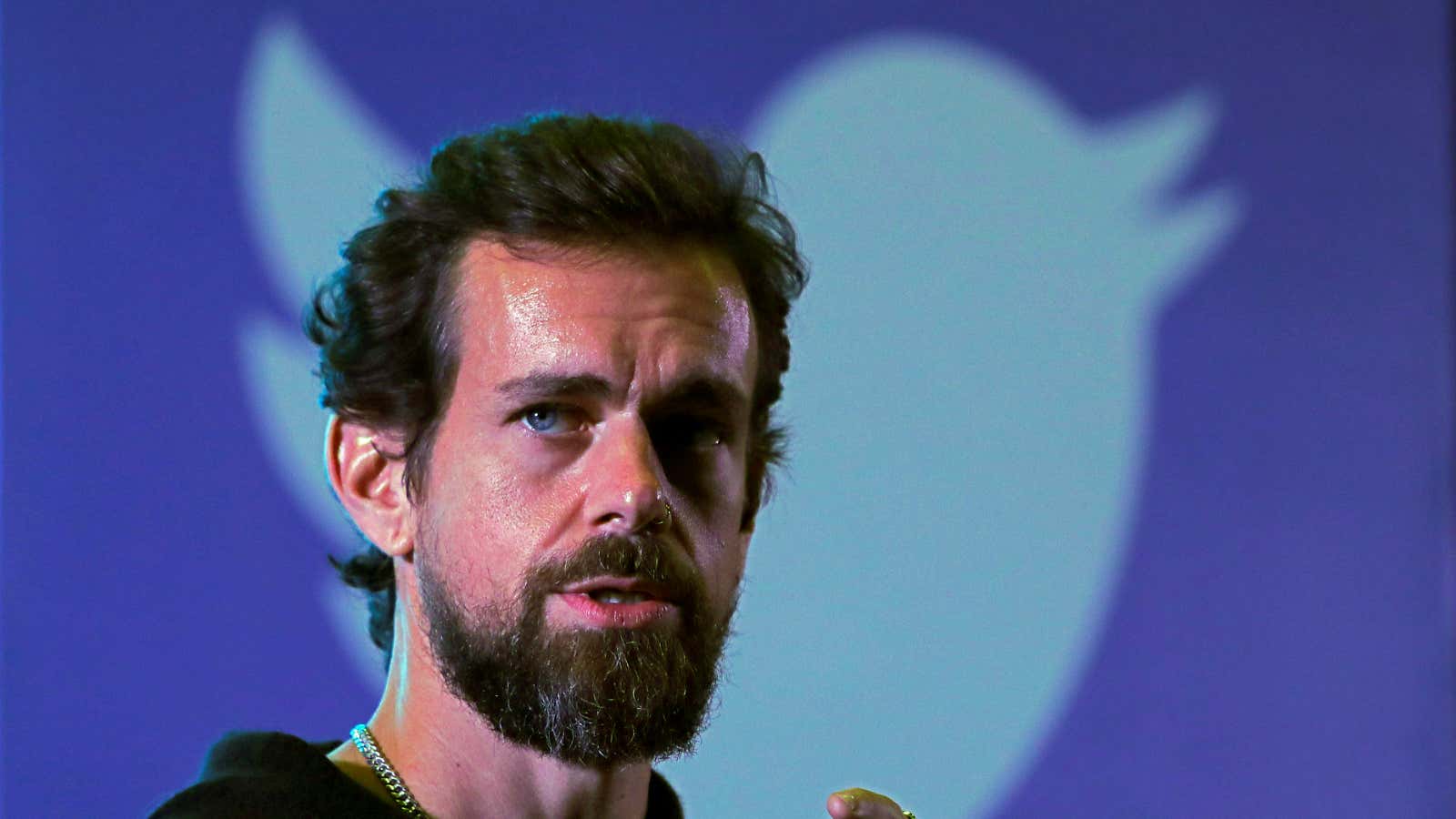India’s general election is almost half way through, but Twitter is set to combat a niche category of fake news only now.
Yesterday (April 24), the microblogging platform announced the launch of a feature that allows users to report posts attempting to “undermine the process of registering to vote or engaging in the electoral process.” Examples of this type of content, a company blog post explained, could be intentionally misleading instructions about how to vote or register to vote, or other such election-related misinformation.
The problem, though, is the timing. Three phases of the election to India’s lower house of parliament (Lok Sabha) have concluded, and the last day to register for a voter ID card in time was over a month ago. “You only have four phases left, and if you don’t have a voter ID, you’re not going to get a voter ID (before the polling date),” Pratik Sinha, co-founder of the fact-checking website AltNews, told Quartz. At this point, he said, Twitter’s added feature is simply “too little, too late.”
The tardiness of this feature is just one example of the microblogging site’s poor preparations for history’s largest election.
Fake news
Another major issue with Twitter’s new feature, Sinha said, is that it is “very specific to misinformation around voting,” which is only a “tiny sliver in the pie of misinformation.”
Over the past several months AltNews has debunked a few items that Twitter would likely consider to be voting-related misinformation. For instance, a message that claimed that Indians living abroad would be able to vote online, and a fake newspaper clipping saying there would be a Rs350 ($5) penalty for not voting.
But far more of the articles debunked on the site, as well as on other fact-checking sites in India, deal with other topics.
A recent Reuters investigation, for example, found that copies of a fake video, taken down by Facebook, were still circulating on the platform, besides on Twitter and YouTube. The video had been spliced and edited to twist the words of prominent politicians of India’s ruling party.
Additionally, misinformation that circulated after the India-Pakistan border conflict in February, often on platforms like Twitter, fanned nationalist tensions during an already contentious and divided time.
Twitter’s new feature does not cover such misinformation.
In his last visit to India in November, Twitter CEO Jack Dorsey gave a talk to students at IIT Delhi, in which he spoke about how he wanted to break down the category of “fake news” into smaller parts, isolating only the content that could be proved as intentionally misleading. He gave detailed examples of misleading information about voter registration during the 2016 US presidential election—perhaps an early indication of his intent to launch the new feature.
But if Dorsey wants to help tackle India’s actual misinformation crisis, he may want to start thinking bigger and broader.
Ads
This new misinformation feature is not the only bungled attempt Twitter has made to launch a useful feature ahead of the Indian elections. Last month, the platform launched an “ad transparency centre”—an archive that shows promoted tweets by accounts, including those by politicians.
Other tech giants, such as Facebook and Google, have rolled out similar tools in India ahead of the elections. But Twitter’s archive, even in comparison to Facebook’s, has a long way to go if it wants to be a useful transparency tool. Not all formats of ads are visible on it, and non-political content is only visible for seven days. And most crucially, unlike Facebook’s archive, Twitter’s is not even searchable by key term, making it extremely difficult to study the content of political advertising on Twitter.
Change of guard
Organisationally, Twitter India also seems to be on the back foot for one major reason: The company hired a managing director (MD) for India only three days ago. The position, now filled by former Network18 Digital CEO Manish Maheswari, had been vacant since last September when the previous MD resigned.
Not having a long-term leader in the months leading up to such a major election may have been a questionable choice, not to mention changing the leadership in the thick of the event.
“We have made a concerted effort to work with the Election Commission of India so that they can bring any issues to our attention easily and quickly. We have developed a dedicated, elections-specific portal for election partners to raise any misleading content specific to the act of voting in the Lok Sabha election,” a Twitter spokesperson told Quartz in response to queries.
On the new reporting feature, they said: “We believe this product update targets a very specific and important aspect of misleading information during the elections, but for a broader understanding of how Twitter has reiterated its commitment to preserving the integrity of elections, please see Twitter India’s blog: Protecting the integrity of the election conversation in India.”
Twitter continues to enforce its policies on “impersonation, inactive accounts, automation, and spam,” and to take action against millions of accounts every week, the spokesperson added.
Read Quartz’s coverage of the 2019 Indian general election here.
